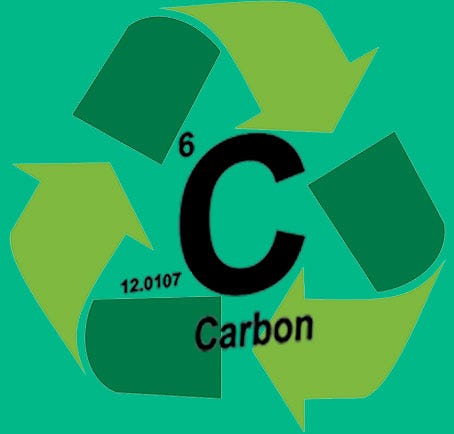Is Carbon the Enemy? Or Do We Just Need A New Way to Talk About It?

Despite the re-commitment to the Paris Climate Treaty voiced by 195 nations at the COP22 climate meeting in Marrakesh, Morocco in November, there remains the reality of climate change denial and the failure by major producers of carbon emissions to restrict voluntarily or by legislation this recognized force in our rapidly changing natural world. That climate change was not even discussed in the recent presidential election in the United States is a telling indicator.
The environmental movement has worked assiduously to build public awareness of this global problem, citing the changing weather patterns, resultant extreme weather, drought wildfires, erosion, ice melt and all the rest. But if there has been no meaningful shift in public attitudes, perhaps then we should reconsider the tenets of the argument and the vocabulary used?
William McDonough, architect, urban designer, and visionary provocateur, introduced one such change in the November issue of nature magazine and to a COP22 audience that offers a fascinating change in how we view the carbon cycle, how to redefine its value, and how to mitigate its negative consequence as a possible new way forward.
McDonough identifies three categories of carbon:
“Living Carbon: organic, flowing, providing fresh food, healthy forests and fertile soil; Durable Carbon: locking in stable solids such as limestone or recyclable polymers that are used and re-used, ranging from reusable fibers like paper and cloth to building and infrastructure elements that can last for generations and be reused again; and Fugitive Carbon: unwanted and toxic, including carbon dioxide released into the atmosphere by burning fossil fuels, waste to energy plants, methane leaks, deforestation, much industrial agriculture and urban development.”
As a subset of all three, he identifies Working Carbon, as “a material being put to human use. For example, working living carbon such as cultivated agricultural systems; working durable carbon such as recycled, reused, and reprocessed in circular technical systems; and working fugitive carbon such as fossil fuels used for power."
McDonough’s new vision also identifies three strategies for carbon management and climate change.
~ Carbon Positive: actions converting atmospheric carbon to forms that enhance soil nutrition or to durable forms such as polymers and solid aggregates; also recycling of carbon into nutrients from organic materials, food waste, compostable polymers and sewers;
~ Carbon Neutral: actions that transform or maintain carbon in durable Earth-bound forms and cycles across generations; or renewable energy such as solar wind and hydropower that do not release carbon;
~ Carbon Negative: actions that pollute the land, water and atmosphere with various forms of carbon, for example, carbon dioxide and methane into the atmosphere or plastics into the ocean.

Image Credit: Inhabit.com
McDonough goes on to launch a concept of the Carbon Positive City that “brings the new language for carbon into a tangible design framework.” The Carbon Positive City integrates agriculture, regenerative land management practices and urban design at a local, regional and international scale and envisions a holistic, synergistic system to transform fugitive carbon to durable carbon, such as plastics and building materials, as well as into living carbon such as healthy soils, gardens, crops, and landscapes. The City infrastructure adapts to the new idea: for example, sewage treatment plants are reconceived as fertilizer factories and intensive integrated agricultural systems, what he calls “solar orchards” that provide clean energy, clean food, and jobs, simultaneously. Implicit in every aspect of this vision is the requirement of adequate clean water, from the ocean-water cycle, conserved and sustained in every structure and action herein conceived. The full version of McDonough’s article, “Carbon is Not the Enemy” can be found at www.nature.com.
This vision is not as complicated or impossible as at first it may seem. All of this change is practical and possible using existing technology and financial resources. What is missing is the imagination, political will, financial commitment, and acceptance of change to make it so, and that is exactly what we are all asking when faced with the actual modifications of value, organization, and behavior required to invent our response to climate change. What this plan also does, directly and indirectly, is to retain the best of our historical reliance on carbon, to reject the worst and its evident destructive consequence, and to provide an immediate, optimistic, constructive response to the climate challenge and a specific, inventive, productive, and successful path to follow into our future. Change the vocabulary; changes the definitions; change the arguments; change our minds; change our way forward; change the world.
- - -
“Is Carbon the Enemy? Or Do We Just Need A New Way to Talk About It?” was originally broadcast as an audio episode entitled “Why We Need A New Vocabulary To Talk About Carbon” on World Ocean Radio. It is part of the Earth Optimism Series, 24 posts that will profile conservation actions and innovations to reduce our impacts on the planet. The Earth Optimism Series is brought to you by the World Ocean Observatory in partnership with the Smithsonian Institution’s Ocean Portal, to raise awareness of the Earth Optimism Summit during Earth Day weekend, April 21st through 23rd, 2017 in Washington DC and around the world. Read more solutions and success stories here and share your own ideas at earthoptimism.si.edu.
- Login to post comments
-


